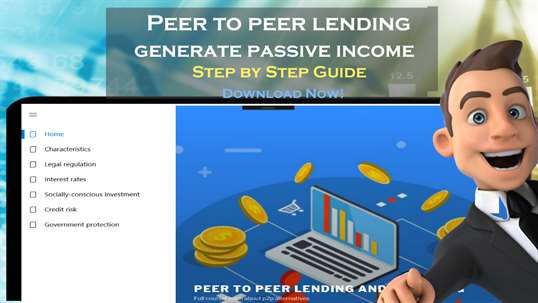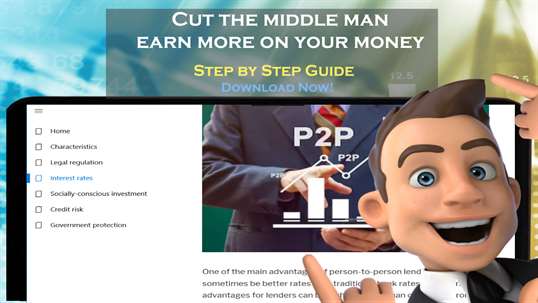

- Supported Devices
- HoloLens
- Updated
- May 15,2019
- Size
- 30.35 MB
- Age
- Everyone
- Release Date
-
- Description
-
Peer to peer lending, also abbreviated as P2P lending, is the practice of lending money to individuals or businesses through online services that match lenders with borrowers. Since peer to peer lending companies offering these services generally operate online, they can run with lower overhead and provide the service more cheaply than traditional financial institutions. As a result, lenders can earn higher returns compared to savings and investment products offered by banks, while borrowers can borrow money at lower interest rates, even after the P2P lending company has taken a fee for providing the matchmaking platform and credit checking the borrower. There are several such peer to peer platforms, the popular ones are lending club, Kiva and upstart.
This Guide will teach you everything you need to know about peer to peer lending and investing:
P2P lending and investing characteristics - Peer-to-peer lending does not fit cleanly into any of the three traditional types of financial institutions—deposit takers, investors, insurers—and is sometimes categorized as an alternative financial service. We will show you the many special characteristics that will help you understand it better.
Peer-to-peer lending Legal regulation - In many countries, soliciting investments from the general public is considered illegal. Crowd sourcing arrangements in which people are asked to contribute money in exchange for potential profits based on the work of others are considered to be securities.
P2P Interest rates - One of the main advantages of person-to-person lending for borrowers can sometimes be better rates than traditional bank rates can offer. The advantages of lenders can be higher returns than obtainable from a savings account or other investments, but subject to risk of loss, unlike a savings account.
P2P Socially-conscious investment - For investors interested in socially conscious investing, peer-to-peer lending offers the possibility of supporting the attempts of individuals to break free from high-rate debt, assist persons engaged in occupations or activities that are deemed moral and positive to the community, and avoid investment in persons employed in industries deemed immoral or detrimental to the community.
P2P investing Credit risk - Peer-to-peer lending also attracts borrowers who, because of their credit status or the lack thereof, are unqualified for traditional bank loans. Because past behavior is frequently indicative of future performance and low credit scores correlate with high likelihood of default, peer-to-peer intermediaries have started to decline a large number of applicants and charge higher interest rates to riskier borrowers that are approved. Learn how to asses that risk and choose how much risk you’d like to take.
P2P investing and P2P lending – Government protection - Because, unlike depositors in banks, peer-to-peer lenders can choose themselves whether to lend their money to safer borrowers with lower interest rates or to riskier borrowers with higher returns, in the US peer-to-peer lending is treated legally as an investment and the repayment in case of borrower defaulting is not guaranteed by the federal government (U.S. Federal Deposit Insurance Corporation) the way bank deposits are.
Different Peer-to-Peer Lending Websites – We will show the pros and cons of each of the biggest peer to peer companies, especially we will talk about the more popular upstart, lending club and Kiva and help you find your way using them.
Download now and make sure your money works for you - like it should!
-
Related Windows Apps
-

1
-
Free
-

1
-
Free
-

1
-
Free
-

1
-
Free
-

2
-
Free